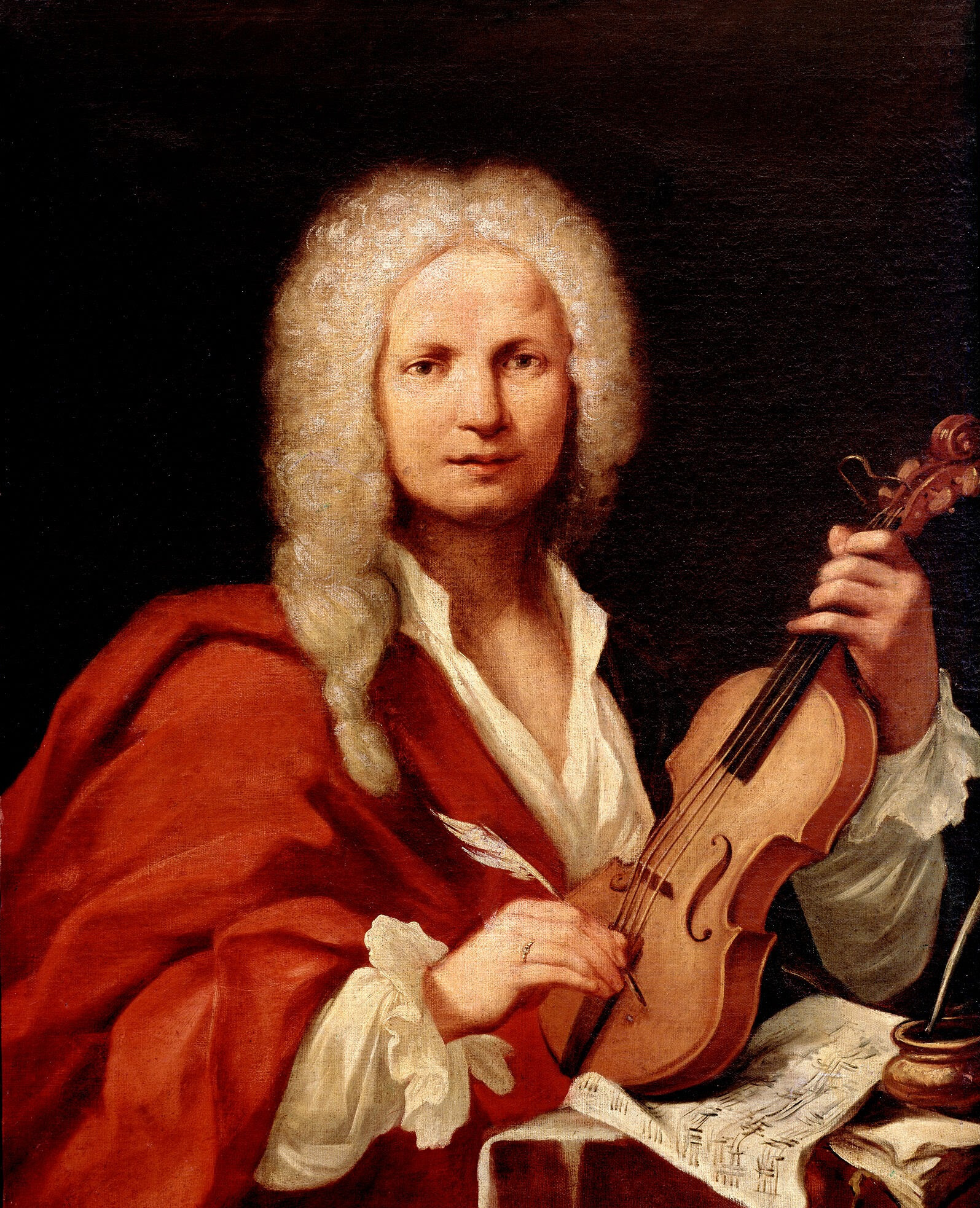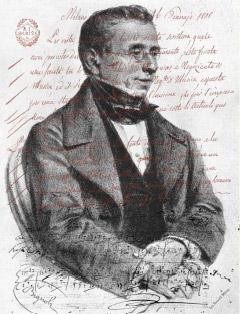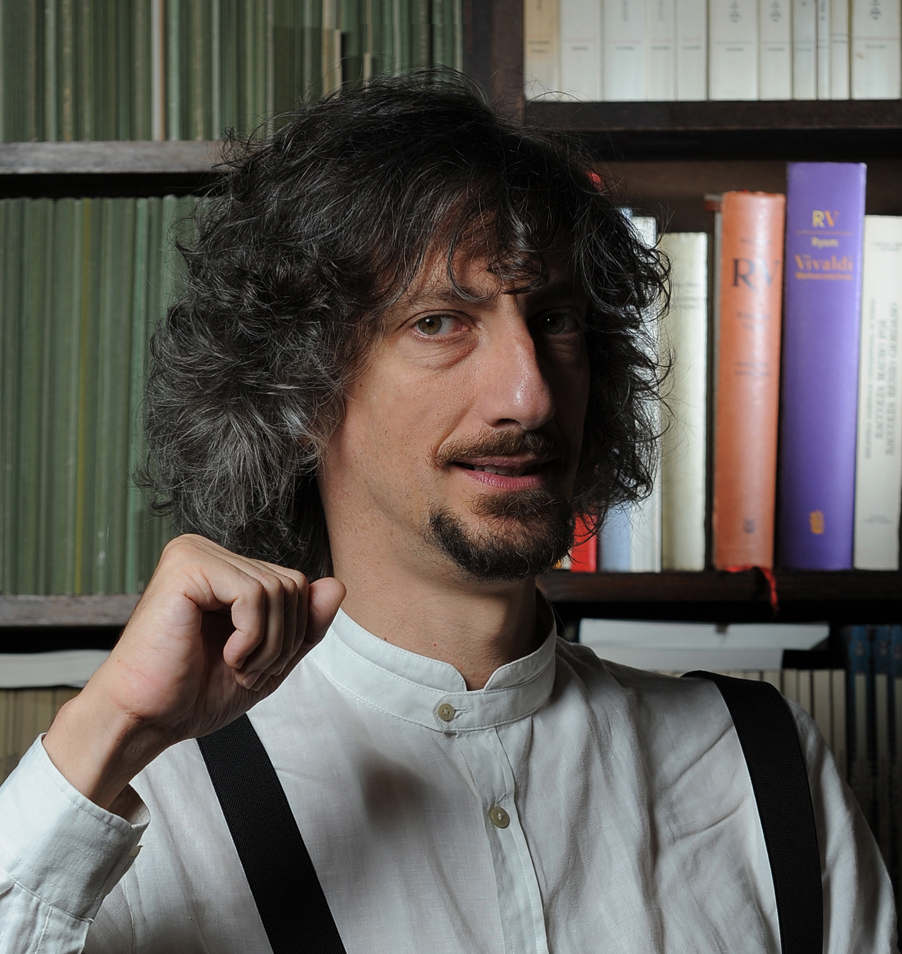|
Ryom Verzeichnis
The Ryom-Verzeichnis or Ryom Verzeichnis (both often abbreviated ''RV'') is the standard catalogue of the music of Antonio Vivaldi created by Danish musicologist Peter Ryom. ''Verzeichnis'' is the German word for catalogue. First published in 1973 under the title ''Antonio Vivaldi: Table de Concordances des Œuvres (RV)'', the Ryom-Verzeichnis has existed in several forms over the course of its development. The catalogue is often used to identify Vivaldi's works by a simple number. RV numbers below 741 were assigned systematically, with vocal works following 585 instrumental ones; as additional works are discovered or confirmed, they are assigned numbers above 740. Instrumental works were first sorted by category, instrumentation and key (beginning with C Major), and then assigned sequential numbers. For example, Vivaldi's celebrated '' Four Seasons'', made up of four violin concertos (not sequentially numbered because they are in different keys), and his famous lute concerto ar ... [...More Info...] [...Related Items...] OR: [Wikipedia] [Google] [Baidu] |
Antonio Vivaldi
Antonio Lucio Vivaldi (4 March 1678 – 28 July 1741) was an Italian composer, virtuoso violinist, impresario of Baroque music and Roman Catholic priest. Regarded as one of the greatest Baroque composers, Vivaldi's influence during his lifetime was widespread across Europe, giving origin to many imitators and admirers. He pioneered many developments in orchestration, violin technique and Program music, programmatic music. He consolidated the emerging concerto form, especially the solo concerto, into a widely accepted and followed idiom. Vivaldi composed many instrumental concertos, for the violin and a variety of other musical instruments, as well as Sacred Music, sacred choral works and List of operas by Antonio Vivaldi, more than fifty operas. His best-known work is a series of violin concertos known as ''The Four Seasons (Vivaldi), The Four Seasons''. Many of his compositions were written for the all-female music ensemble of the , a home for abandoned children. Vivaldi b ... [...More Info...] [...Related Items...] OR: [Wikipedia] [Google] [Baidu] |
Peter Ryom
Peter Ryom (born 31 May 1937 in Copenhagen) is a Danish musicologist. He is internationally known as the author of the Ryom-Verzeichnis, the now-standard catalogue of the works of Antonio Vivaldi Antonio Lucio Vivaldi (4 March 1678 – 28 July 1741) was an Italian composer, virtuoso violinist, impresario of Baroque music and Roman Catholic priest. Regarded as one of the greatest Baroque composers, Vivaldi's influence during his lif .... The number of a composition in the Ryom Verzeichnis (Ryom catalogue) is always prefaced by the abbreviation RV. Partial bibliography * * * * * References * {{DEFAULTSORT:Ryom, Peter 1937 births Living people Danish musicologists People from Copenhagen 20th-century musicologists 21st-century musicologists ... [...More Info...] [...Related Items...] OR: [Wikipedia] [Google] [Baidu] |
Four Seasons (Vivaldi)
''The Four Seasons'' () is a group of four violin concerti by Italian composer Antonio Vivaldi, each of which gives musical expression to a season of the year. These were composed around 1718–1720, when Vivaldi was the court chapel master in Mantua. They were published in 1725 in Amsterdam in what was at the time the Dutch Republic, together with eight additional concerti, as (''The Contest Between Harmony and Invention''). ''The Four Seasons'' is the best known of Vivaldi's works. Though three of the concerti are wholly original, the first, "Spring", borrows patterns from a sinfonia in the first act of Vivaldi's contemporaneous opera '' Il Giustino''. The inspiration for the concertos is not the countryside around Mantua, as initially supposed, where Vivaldi was living at the time, since according to Karl Heller they could have been written as early as 1716–1717, while Vivaldi was engaged with the court of Mantua only in 1718. They were a revolution in musical conception: ... [...More Info...] [...Related Items...] OR: [Wikipedia] [Google] [Baidu] |
Violin Concerto
A violin concerto is a concerto for solo violin (occasionally, two or more violins) and instrumental ensemble (customarily orchestra). Such works have been written since the Baroque period, when the solo concerto form was first developed, up through the present day. Many major composers have contributed to the violin concerto repertoire. Traditionally a three-movement work, the violin concerto has been structured in four movements by a number of modern composers, including Dmitri Shostakovich, Igor Stravinsky, and Alban Berg. In some violin concertos, especially from the Baroque and modern eras, the violin (or group of violins) is accompanied by a chamber ensemble rather than an orchestra—for instance, in Vivaldi's '' L'estro armonico'', originally scored for four violins, two violas, cello, and continuo, and in Allan Pettersson's first concerto, for violin and string quartet. List of violin concertos The following concertos are presently found near the center of the mainst ... [...More Info...] [...Related Items...] OR: [Wikipedia] [Google] [Baidu] |
Lute Concerto
The Lute Concerto in D major, RV 93, is one of four works featuring the solo lute, 2 violins, and basso continuo written by Antonio Vivaldi. Vivaldi wrote the piece in 1730-1731, a period in which he wrote two of his other works featuring the lute: the trios for violin and lute in G minor and C major. Analysis The concerto is in three movements: *I. '' Allegro giusto'' *II. '' Largo'' *III. ''Allegro'' The first movement is in a fast tempo and begins with a ritornello played by the violins and then repeated by the solo lute. According to AllMusic critic Brian Robins, the ritornello "contrasts a tuneful opening theme with a more lyrical motif in the minor mode." During the movement, the solo lute plays melodies in contrast to the ritornello. The movement consists of several sections, almost all of which incorporate a portion of the ritornello melody. The second movement also consists of several sections. Robins describes this movement as a "reflective meditation by the soloist" ... [...More Info...] [...Related Items...] OR: [Wikipedia] [Google] [Baidu] |
Marc Pincherle
Marc Pincherle was born in Constantine on 13 June 1888 and died in Paris on 20 June 1974. A French musicologist, music critic and violinist, he was the pupil of Louis Laloy, André Pirro and Romain Rolland, among others. From 1913 on, when the life and works of Antonio Vivaldi became the subject of his doctoral thesis, he was instrumental in the rediscovery of a number of baroque composers. His biography of Vivaldi, published after World War II, was the basis for all further research regarding the composer and is still considered an influential and significant work to this day. He was also the first to organize Vivaldi's works; older publications and recordings often cite the Pincherle (or 'P') numbers, although the 'RV' catalogue devised by Ryom is now almost universally used. Pincherle was one of the founding members of the Académie Charles-Cros An academy (Attic Greek: Ἀκαδήμεια; Koine Greek Ἀκαδημία) is an institution of tertiary education. The name ... [...More Info...] [...Related Items...] OR: [Wikipedia] [Google] [Baidu] |
Casa Ricordi
Casa Ricordi is a publisher of primarily European classical music, classical music and opera. Its classical repertoire represents one of the important sources in the world through its publishing of the work of the major 19th-century Italian composers such as Gioachino Rossini, Gaetano Donizetti, Vincenzo Bellini, Giuseppe Verdi, and, later in the century, Giacomo Puccini, composers with whom one or another of the Ricordi family came into close contact.Gossett 2006, p. 97 Founded in Milan in 1808 as G. Ricordi & C. by violinist Giovanni Ricordi (1785–1853), the Ricordi company became a totally family-run organization until 1919, when outside management was appointed. Four generations of Ricordis were at the helm of the company, Giovanni being succeeded in 1853 by his son Tito (1811–1888) (who had worked for his father since 1825). Tito's son was Giulio Ricordi, Giulio (1840–1912). He had also worked for his father, beginning full-time in 1863, and then took over from 1888 ... [...More Info...] [...Related Items...] OR: [Wikipedia] [Google] [Baidu] |
Bach-Werke-Verzeichnis
The (, ; BWV) is a Catalogues of classical compositions, catalogue of compositions by Johann Sebastian Bach. It was first published in 1950, edited by Wolfgang Schmieder. The catalogue's second edition appeared in 1990 and the third edition in 2022.Bach-Werke-Verzeichnis (BWV). Thematisch-systematisches Verzeichnis der musikalischen Werke von Johann Sebastian Bach, 3rd expanded edn. Edited by Christine Blanken, Christoph Wolff and Peter Wollny The catalogue groups compositions by genre. Even within a genre, compositions are not necessarily collated chronologically. In part this reflects that fact that some compositions cannot be dated. However, an approximate or precise date can be assigned to others: for example, BWV 992 was composed many years before BWV 1. Alternative classifications The BWV classification is open to criticism, and the Bach scholar Christoph Wolff was involved in the design of an alternative, the Bach Compendium. Publication of the Bach Compendiu ... [...More Info...] [...Related Items...] OR: [Wikipedia] [Google] [Baidu] |
Federico Maria Sardelli
Federico Maria Sardelli (born 1963 in Livorno) is an Italian people, Italian conducting, conductor, Musical historicism, historicist-composer, musicology, musicologist, comic artist, and flautist, resident in Florence. He founded the medieval music, medieval ensemble Modo Antiquo in 1984. In 1987, Modo Antiquo also became a baroque music, baroque orchestra, debuting with the performance of Jean-Baptiste Lully's ''Ballet des Saisons'' in front of an audience of about five thousand. Life and career He is the main conductor of the Accademia Barocca di S. Cecilia (Rome) and guest conductor of the Orchestra Filarmonica di Torino, Maggio Musicale Fiorentino, Orquestra de la Comunitat Valenciana, Gewandhaus Leipzig, Staatskapelle Halle, Kammerakademie Potsdam, Moscow State Chamber Orchestra, etc. He has recorded more than forty Albums as soloist and conductor, published by the labels Naïve, Deutsche Grammophon, Sony, Brilliant Classics, Brilliant, Tactus. A notable protagonist in the ... [...More Info...] [...Related Items...] OR: [Wikipedia] [Google] [Baidu] |
List Of Compositions By Antonio Vivaldi
The following is a list of compositions by the Italian Baroque composer Antonio Vivaldi (1678–1741). Works with opus number The following is a list of compositions by Vivaldi that were published during his lifetime and assigned an opus number. The more comprehensive RV numbering scheme was created in the 1970s. Fictitious Opus 13 An alleged "Opus 13", ''Il pastor fido'' (''The Faithful Shepherd'') was published in 1737 by Jean-Noël Marchand through a secret agreement with Nicolas Chédeville to publish a collection of Chédeville's compositions under Vivaldi's name. Chédeville supplied the funding and received the profits, all of which was documented in a notarial act A notarial act (or notarial instrument or notarial writing) is any written narration of facts (recitals) drawn up by a notary, notary public or civil-law notary authenticated by the notary's signature and official seal and detailing a procedure whi ... by Marchand in 1749. The work includes six sonatas for P ... [...More Info...] [...Related Items...] OR: [Wikipedia] [Google] [Baidu] |
List Of Operas By Antonio Vivaldi
This is a complete list of operas by Antonio Vivaldi (1678–1741). He claimed to have composed 94 operas, but fewer than 50 titles have been identified, of which the scores of only 20 or so survive, wholly or in part. Moreover, the practice of reviving works under a different title and of creating '' pasticci'' has confused musicologists. All of Vivaldi's operatic works are described as ''dramma per musica'', roughly equivalent to opera seria. Key: ''music completely lost''; ''music preserved'' (at least in part) 51 items are listed. List of operas References Further reading *Cross, Eric (1992), "Vivaldi, Antonio", in ''The New Grove Dictionary of Opera'', ed. Stanley Sadie Stanley John Sadie (; 30 October 1930 – 21 March 2005) was a British musicologist, music critic, and editor. He was editor of the sixth edition of the '' Grove Dictionary of Music and Musicians'' (1980), which was published as the first edition ... (London) External links * * {{DEFAULTSORT:Viva ... [...More Info...] [...Related Items...] OR: [Wikipedia] [Google] [Baidu] |
Opus Number
In music, the opus number is the "work number" that is assigned to a musical composition, or to a set of compositions, to indicate the chronological order of the composer's publication of that work. Opus numbers are used to distinguish among compositions with similar titles; the word is abbreviated as "Op." for a single work, or "Opp." when referring to more than one work. Opus numbers do not necessarily indicate chronological order of composition. For example, posthumous publications of a composer's juvenilia are often numbered after other works, even though they may be some of the composer's first completed works. To indicate the specific place of a given work within a music catalogue, the opus number is paired with a cardinal number; for example, Beethoven's Piano Sonata No. 14 in C-sharp minor (1801, nicknamed ''Moonlight Sonata'') is "Opus 27, No. 2", whose work-number identifies it as a companion piece to "Opus 27, No. 1" ( Piano Sonata No. 13 in E-flat major, 1800 ... [...More Info...] [...Related Items...] OR: [Wikipedia] [Google] [Baidu] |





